
The Theosophical Society is the organizational body of Theosophy, an esoteric new religious movement. It was founded in New York City, U.S. in 1875. Among its founders were Helena Blavatsky, a Russian mystic and the principal thinker of the Theosophy movement, and Henry Steel Olcott, the society's first president. It draws upon a wide array of influences among them older European philosophies and movements such as Neoplatonism and occultism, as well as parts of Asian religious traditions such as Hinduism, Buddhism, and Islam.
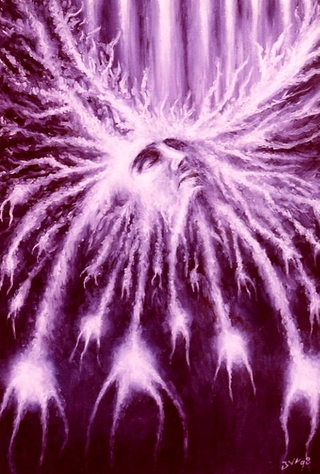
The astral body is a subtle body posited by many philosophers, intermediate between the intelligent soul and the mental body, composed of a subtle material. In many recensions the concept ultimately derives from the philosophy of Plato though the same or similar ideas have existed all over the world well before Plato's time: it is related to an astral plane, which consists of the planetary heavens of astrology. The term was adopted by nineteenth-century Theosophists and neo-Rosicrucians.

The astral plane, also called the astral realm or the astral world, is a plane of existence postulated by classical, medieval, oriental, and esoteric philosophies and mystery religions. It is the world of the celestial spheres, crossed by the soul in its astral body on the way to being born and after death, and is generally believed to be populated by angels, spirits or other immaterial beings. In the late 19th and early 20th century the term was popularised by Theosophy and neo-Rosicrucianism.
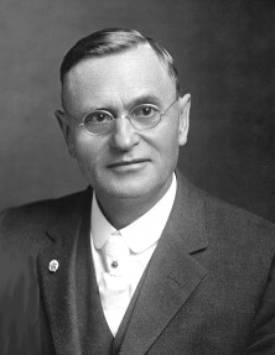
Max Heindel was a Danish American Christian occultist, astrologer, and mystic.
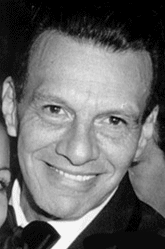
Samael Aun Weor, born Víctor Manuel Gómez Rodríguez, was a teacher and author of over sixty books of esoteric spirituality. He formed a new religious movement under the banner of "Universal Gnosticism", or simply gnosis, and taught the practical and esoteric principles to awaken and fundamentally change the psychological condition.
The Perfect Matrimony or The Door to Enter Into Initiation is the first of approximately seventy books written by Samael Aun Weor. It was first published in 1950 then revised and expanded in 1961.

Root races are concepts in the esoteric cosmology of Theosophy. As described in Helena Petrovna Blavatsky's book The Secret Doctrine (1888), these races correspond to stages of human evolution, and existed mainly on now-lost continents. Blavatsky's model was developed by later theosophists, most notably William Scott-Elliot in The Story of Atlantis (1896) and The Lost Lemuria (1904). Annie Besant further developed the model in Man: Whence, How and Whither (1913). Both Besant and Scott-Elliot relied on information from Charles Webster Leadbeater obtained by "astral clairvoyance". Further elaboration was provided by Rudolf Steiner in Atlantis and Lemuria (1904). Rudolf Steiner, and subsequent theosophist authors, have called the time periods associated with these races Epochs.
Sex magic is any type of sexual activity used in magical, ritualistic or otherwise religious and spiritual pursuits. One practice of sex magic is using sexual arousal or orgasm with visualization of a desired result. A premise posited by sex magicians is the concept that sexual energy is a potent force that can be harnessed to transcend one's normally perceived reality.
The mental body is one of the subtle bodies in esoteric philosophies, in some religious teachings and in New Age thought. It is understood as a sort of body made up of thoughts, just as the emotional body consists of emotions and the physical body is made up of matter. In occult understanding, thoughts are not just subjective qualia, but have an existence apart from the associated physical organ, the brain.
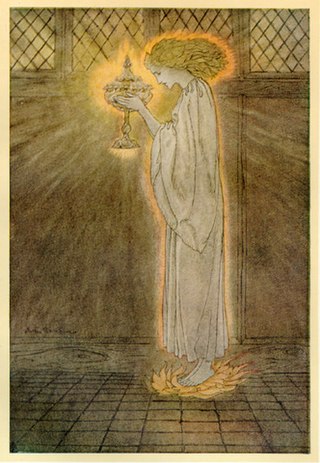
In neo-Theosophy, the etheric body, ether-body, or æther body is the subtle body propounded in esoteric philosophies as the first or lowest layer in the human energy field or aura. The etheric body is said to be in immediate contact with the physical body and to sustain it and connect it with "higher" bodies. It is also said to consist of a finer substance, more pure and composed of smaller particles, than the ordinary matter of the physical plane.
The etheric plane is a term introduced into Theosophy by Charles Webster Leadbeater and Annie Besant to represent the subtle part of the lower plane of existence. It represents the fourth [higher] subplane of the physical plane, the lower three being the states of solid, liquid, and gaseous matter. The idea was later used by authors such as Alice Bailey, Rudolf Steiner, Walter John Kilner and others.
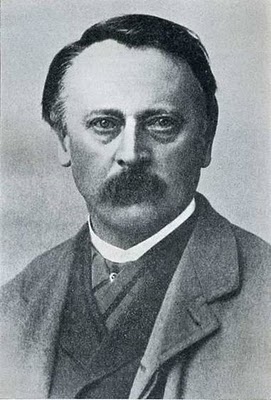
Franz Hartmann was a German medical doctor, theosophist, occultist, geomancer, astrologer, and author.
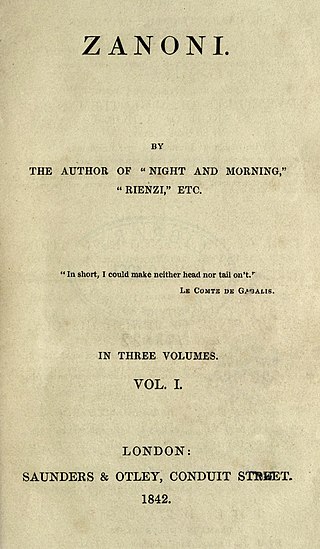
Zanoni is an 1842 novel by Edward Bulwer-Lytton, a story of love and occult aspiration. By way of introduction, the author confesses: "... It so chanced that some years ago, in my younger days, whether of authorship or life, I felt the desire to make myself acquainted with the true origins and tenets of the singular sect known by the name of Rosicrucians." A manuscript came into his hands written in what Bulwer-Lytton described as an "unintelligible cipher", a manuscript which through the author's own interpretation became Zanoni.
Sergei Olegovich Prokofieff was a Russian anthroposophist. He was the grandson of the composer Sergei Prokofiev and his first wife Lina Prokofiev, and the son of Oleg Prokofiev and his first wife Sofia Korovina. Born in Moscow, he studied fine arts and painting at the Moscow School of Art. He encountered anthroposophy in his youth, and soon made the decision to devote his life to it.

Neo-Theosophy is a term, originally derogatory, used by the followers of Helena Blavatsky to denominate the system of Theosophical ideas expounded by Annie Besant and Charles Webster Leadbeater following the death of Madame Blavatsky in 1891. This material differed in major respects from Blavatsky's original presentation, but it is accepted as genuinely Theosophical by many Theosophists around the world.
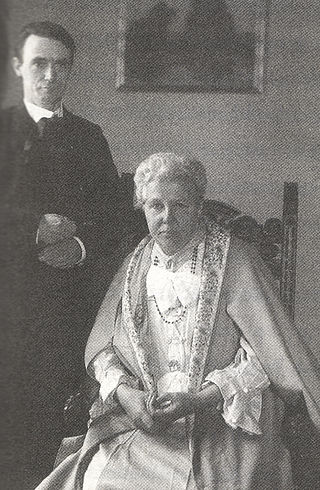
The relationship between Rudolf Steiner and the Theosophical Society, co-founded in 1875 by H.P. Blavatsky with Henry Steel Olcott and others, was a complex and changing one. Rudolf Steiner founded the Anthroposophical Society on 28 December 1912, and he was expelled from the Theosophical Society on 7 March 1913.
Germany and Austria have spawned many movements and practices in Western esotericism, including Rosicrucianism, Theosophy, Anthroposophy and Ariosophy, among others.

In Theosophy, Maitreya or Lord Maitreya is an advanced spiritual entity and high-ranking member of a reputed hidden spiritual hierarchy, the Masters of the Ancient Wisdom. According to Theosophical doctrine, one of the hierarchy's functions is to oversee the evolution of humankind; in concert with this function Maitreya is said to hold the "Office of the World Teacher". Theosophical texts posit that the purpose of this Office is to facilitate the transfer of knowledge about the true constitution and workings of Existence to humankind. Humanity is thereby assisted on its presumed cyclical, but ever progressive, evolutionary path. Reputedly, one way the knowledge transfer is accomplished is by Maitreya occasionally manifesting or incarnating in the physical realm; the manifested entity then assumes the role of World Teacher of Humankind.
Rudolf Steiner wrote four plays that follow the initiation journeys of a group of fictional characters through a series of lives. These plays were intended to be modern mystery plays. Steiner outlined the plot of a fifth play to be set at the Castalian spring at Delphi, but due to the outbreak of First World War, this remained an unfulfilled project.
According to some literary and religious studies scholars, modern Theosophy had a certain influence on contemporary literature, particularly in forms of genre fiction such as fantasy and science fiction. Researchers claim that Theosophy has significantly influenced the Irish literary renaissance of the late 19th and early 20th centuries, notably in such figures as W. B. Yeats and G. W. Russell.










